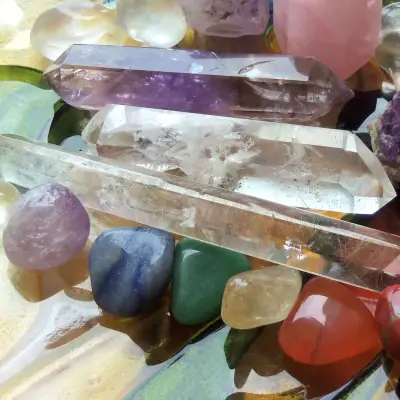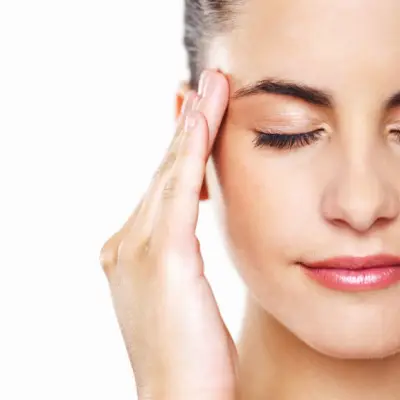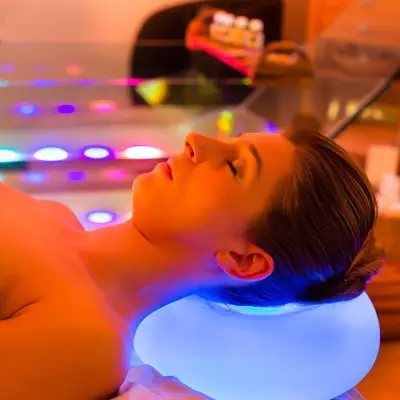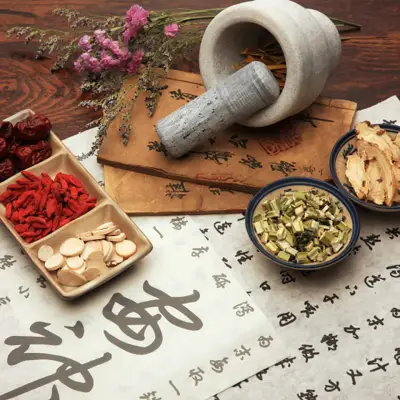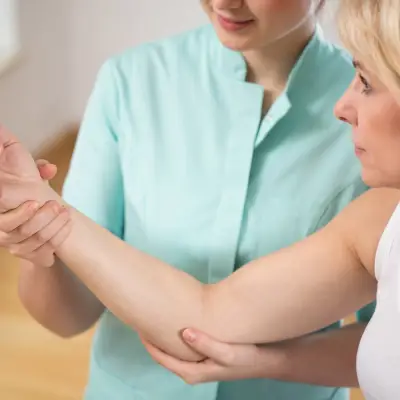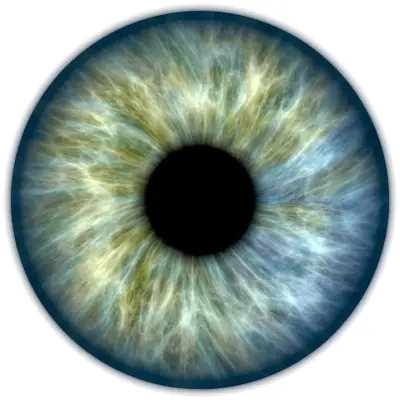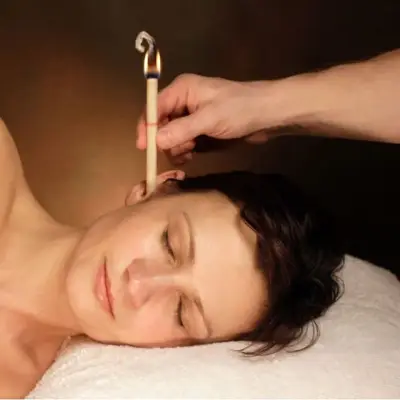Gua Sha, (or Kerokan) is a traditional Chinese medicine practice where someone uses a smooth-edged tool to stroke over your skin while pressing it. This motion produces small, red, rash-like dots that show under the skin called petechiae. The aim of this medicine technique is to reduce systemic inflammation, improve circulation, increase range of motion, and reduce pain and tension.
Jump to:
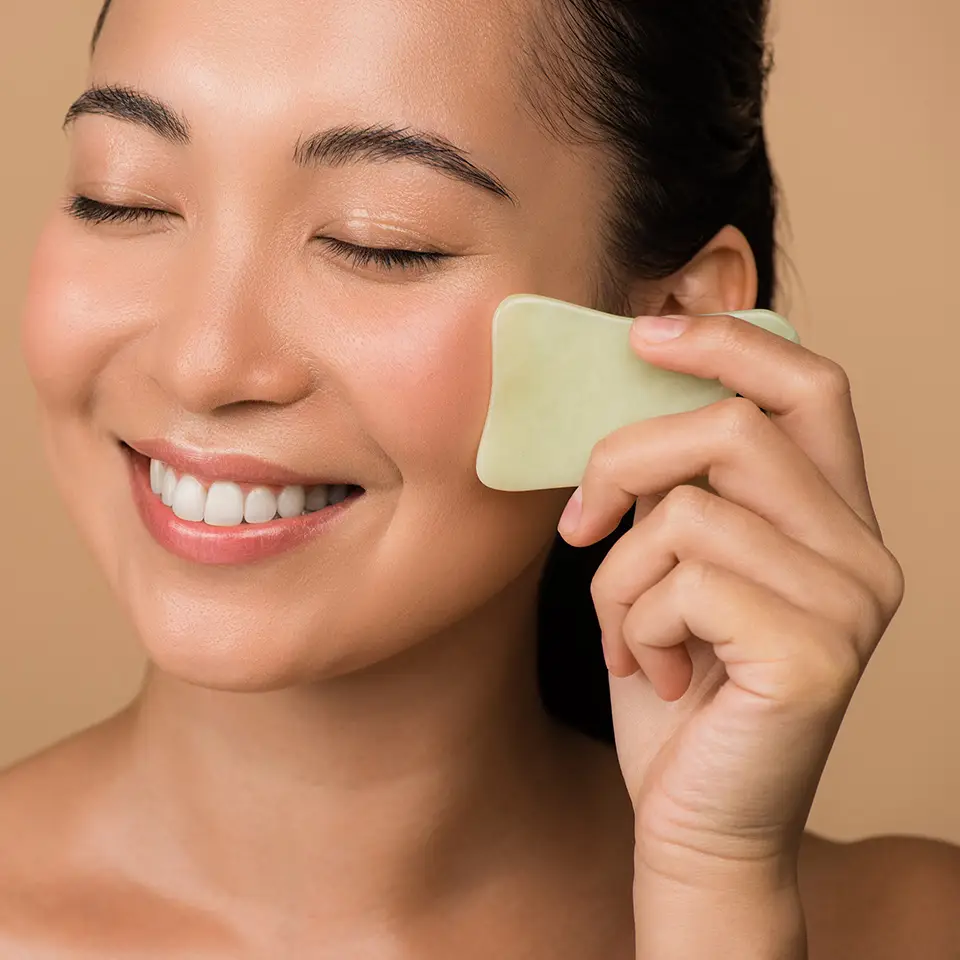
Gua Sha has been practised in East Asia for well over 700 years, with origins dating back to well before the Ming Dynasty. However, the technique has started to garner quite a lot of popularity in recent years as more and more people become aware of its benefits.
So, let’s explore why this technique has become so popular. We will examine the practice's origins, the tools and equipment needed, how to use it, and detail some of its many benefits.
What is Gua Sha?
Gua Sha is a traditional healing technique that originated from East Asia and is commonly practised in Chinese medicine. The name Gua Sha comes from the Chinese word for scraping. It may also be called skin scraping, spooning, or coining. The technique involves scraping the skin with a smooth-edged instrument, such as jade or rose quartz, to improve circulation. This action is believed to ease muscle tension, improve blood flow, and aid healing. Gua Sha is often used to relieve pain and stiffness, for example, in the back or neck, as well as to improve general well-being.
The technique can produce light bruising, which often appears in purple or red spots. Although seeing bruising can be quite disconcerting at first, in most cases, it is completely normal. As long as your Gua Sha routine has been administered in the appropriate manner and you have followed all of the necessary steps, the light bruising should be fine. If the bruising is a little more severe, it may be a sign that you are applying too much pressure during your gua sha massage. Going forward, you should practise applying less pressure.
Recommended for you!
Best SellersWhere Does Gua Sha Come From?
The first recorded documentation of Gua Sha’s uses came during the Ming Dynasty, well over 700 years ago. However, the technique's origin is said to be much older than that. Some historical records cite Gua Sha-like techniques back to the Paleolithic Age, when people fell ill and used hands or stones, as well as household materials such as coins or tins, to massage parts of the body and help reduce the side effects and symptoms of their illnesses.
The technique was developed to address issues like stagnant energy. According to traditional Chinese medicine, qi or chi is the energy that circulates throughout the body. It is commonly believed that for a person to maintain their health and well-being, their qi must be balanced and flow unimpeded. People of ancient China believed that qi could become blocked, causing pain and tension in the muscles and joints. The goal of Gua Sha is to move the blocked energy around the body and disperse it, thereby alleviating aches or stiffness.
Gua Sha Tools and Equipment
Technically speaking, Gua Sha requires very little tools and equipment. All that is required is a gua sha stone and a trained or experienced professional to administer the procedure. Having said this, there are various types of Gua Stones which can be used. Some of the most popular ones include:
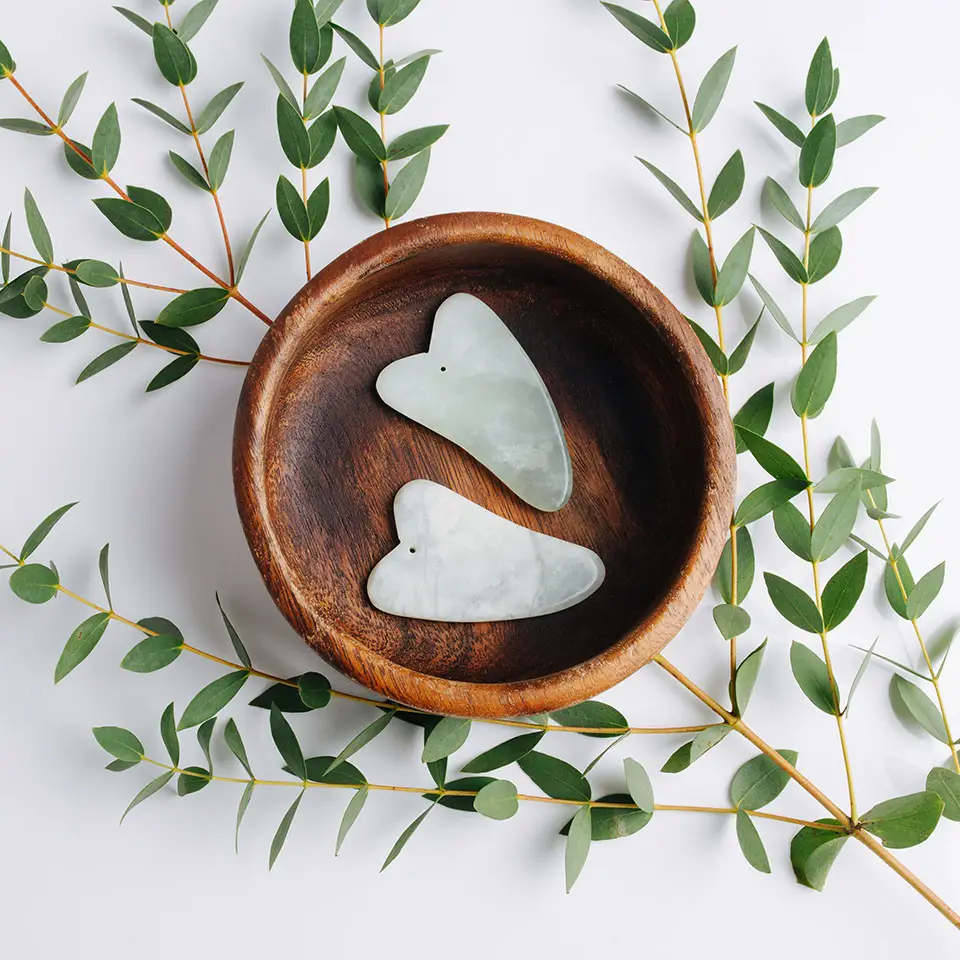
Jade stones are undoubtedly the most popular material in Gua Sha. They have a smooth texture and are of traditional significance in Chinese culture. Jade tools are also believed to have healing properties and are commonly used for facial Gua Sha.
Another popular choice for facial Gua Sha is rose quartz, which is a translucent pink to a rose-red variety of quartz, is said to have soothing properties and is often associated with skincare benefits such as reducing puffiness and improving skin health.
Bian Stone
Bian stones are pointed stones that were historically used in various Chinese medicines. They are considered to have therapeutic properties and are used for more intensive Gua Sha treatments on the body.
Stainless Steel Tools
More modern Gua Sha tools are usually made from stainless steel. They are often used by professionals for body treatments and have become popular because they are durable, long-lasting, and easy to clean.
Buffalo Horn
Buffalo horns are traditionally used in Chinese culture, and they are believed to have the ability to help clear heat from the body.
How To Use Gua Sha
Using Gua Sha effectively involves certain techniques and preparation. The whole process can be broken down into three distinct phases: preparation, technique or action, and aftercare. While the following steps are pretty universally accepted, they are by no means set in stone.
Preparation
The key to any successful Gua Sha procedure is correct preparation. The first step is ensuring you have the correct Gua Sha tools. When choosing the tools, whether a Jade stone or a Rose Quartz, you must ensure the material feels comfortable on your skin and is appropriate for the area you tend to treat.
Once you have identified the appropriate tool, you must clean it effectively. You should also prepare your skin for the procedure by applying a light layer of massage oil or moisturiser. Slightly lubricating the skin is essential because it allows for ease of motion when performing the technique and ensures the tool can rub delicately across your skin.
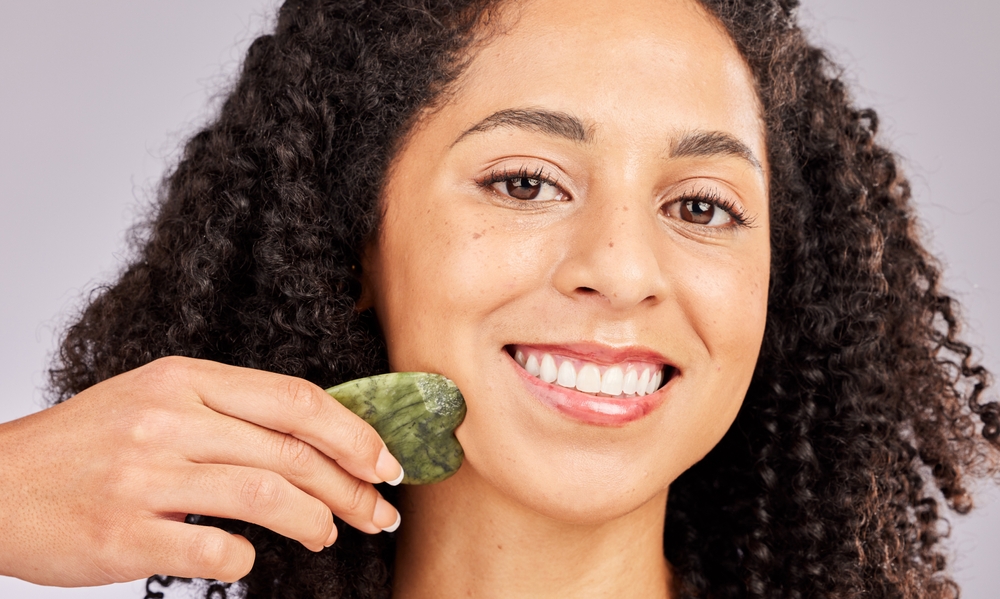
Action
Then comes the action of administering Gua Sha. If you don’t have a seasoned professional available, you can perform the technique yourself; just be sure to follow all commonly accepted practices.
Hold the tool in a comfortable position. This is usually firm but not too hard. Hold the edge at a 15-45 degree angle to your skin, and then you can start scraping. When scraping, it is important to do so gently and slowly. If you are performing Gua Sha on your face, it is recommended to start from the centre and move outward and upward. When scraping, do so in one motion, not back and forth. If the action becomes painful at any point, you should stop immediately. The goal of the technique is to stimulate, not harm.
In terms of the duration of the procedure, it is advised that Gua Sha on the face lasts between 3-5 minutes, whereas the body lasts around 10-15 minutes. Frequency can vary, but many people find doing Gua Sha 2-3 times a week beneficial.
Aftercare
After performing Gua Sha, you should clean your tools and skin. Hydrate accordingly because drinking water after a Gua Sha session can help to facilitate the detoxification process. You should observe the effect the technique has had on your skin. Redness and slight bruising can be very normal and should fade within a few days. If you experience excessive bruising or discomfort, it is a sign that you applied too much pressure.
The Uses of Gua Sha
Gua Sha has many uses. The technique is often used to relieve muscle and joint pain and bone conditions. Some examples include upper and lower back pain, tendon strain, and carpal tunnel syndrome.
Some practitioners claim that Gua Sha can also benefit the immune system and reduce inflammation. On some occasions, Gua Sha can be used to treat colds, flu, and fever. It has many uses, which is a testament to the longevity of the technique.
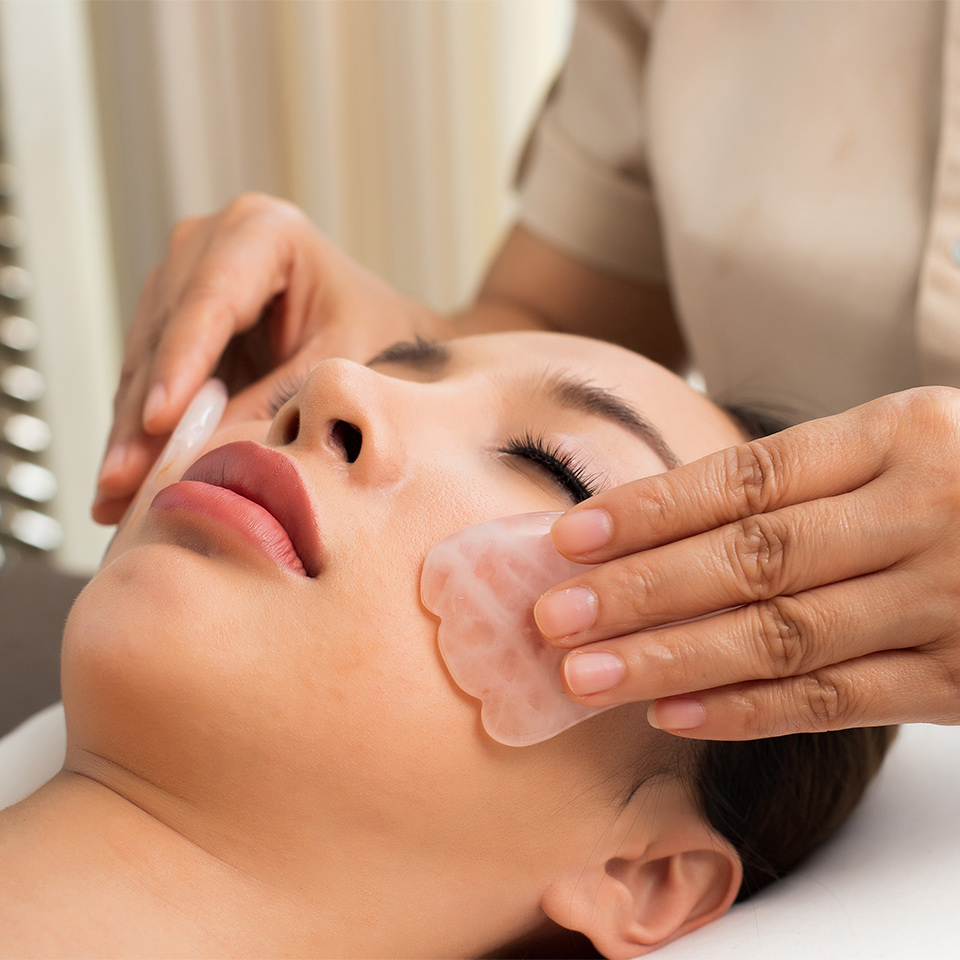
Gua Sha Benefits
There are various benefits to Gua Sha. Some of them include:
Promotes lymphatic drainage
Gua Sha can eliminate fluid build-up, which can reduce puffiness.
Relieves tension from muscles
Gua Sha can relieve muscle tension. Gua Sha tools can be used to untangle knotted areas and release built-up muscle tension.
Improve fine lines and wrinkles
It seems as though, now more than ever, we are trying to look for ways to improve facial structure and reduce wrinkles. Gua Sha can be used to reduce wrinkles and improve facial lines.
Promotes blood circulation
Arguably, the technique's most famous benefit is improved blood circulation while simultaneously lifting and firming the skin.
Other Medical Benefits
Gua Sha can have general health benefits, including relieving the side effects of conditions such as migraine headaches, neck pain, perimenopausal syndrome, hepatitis b, breast engorgement, Tourette syndrome and more.
Potential Side Effects
As with any medical technique, there can be side effects. Some of the potential side effects of Gua Sha include:
Redness and Bruising
After a Gua Sha treatment, your skin could exhibit redness and bruising. While this may seem scary at first, this should be nothing to worry about.
Broken Skin
After Gua Sha, you may have broken skin or other skin problems. If you do have broken skin, you should stop the procedure immediately and seek medical attention as soon as possible. During the procedure, the tiny blood vessels near the surface of the skin, called capillaries, may burst, resulting in broken skin.
Potential Pain
Generally speaking, Gua Sha should not result in pain. However, for some people, the procedure can produce moderate to severe discomfort.
Does Gua Sha Work
Gua Sha has multiple benefits and has proven effective at treating certain conditions. The technique has proven effective at improving circulation, facial structures, some medical conditions, and the aesthetic of skin.
Learn More About Gua Sha from Centre of Excellence
If you would like to learn about the benefits of Gua Sha and become a Gua Sha expert, you can enrol in our accredited Gua Sha diploma course. The course has 10 modules, covering topics ranging from the science behind Gua Sha and advanced techniques to how to set up your business as a Gua Sha Therapist.

